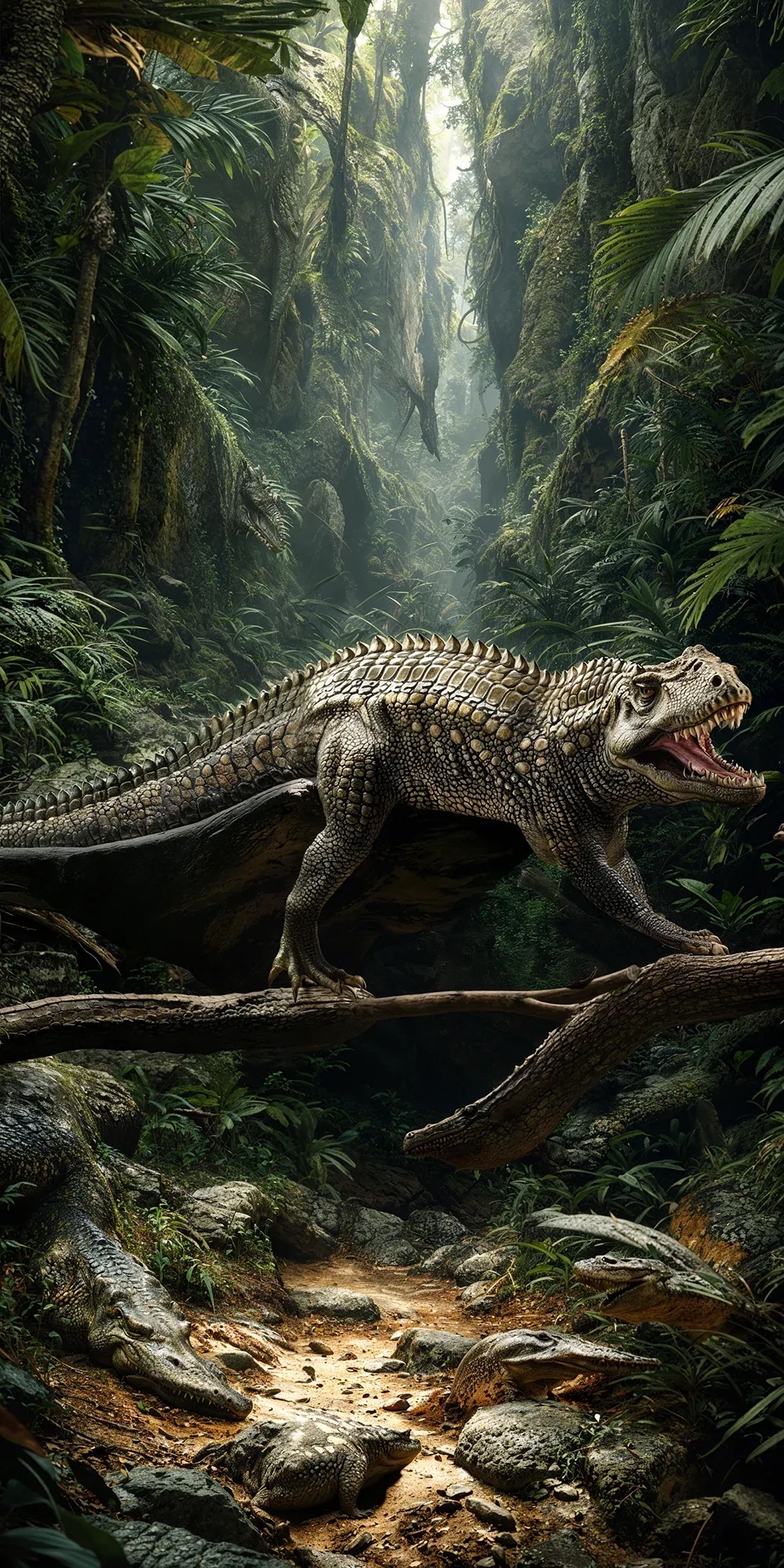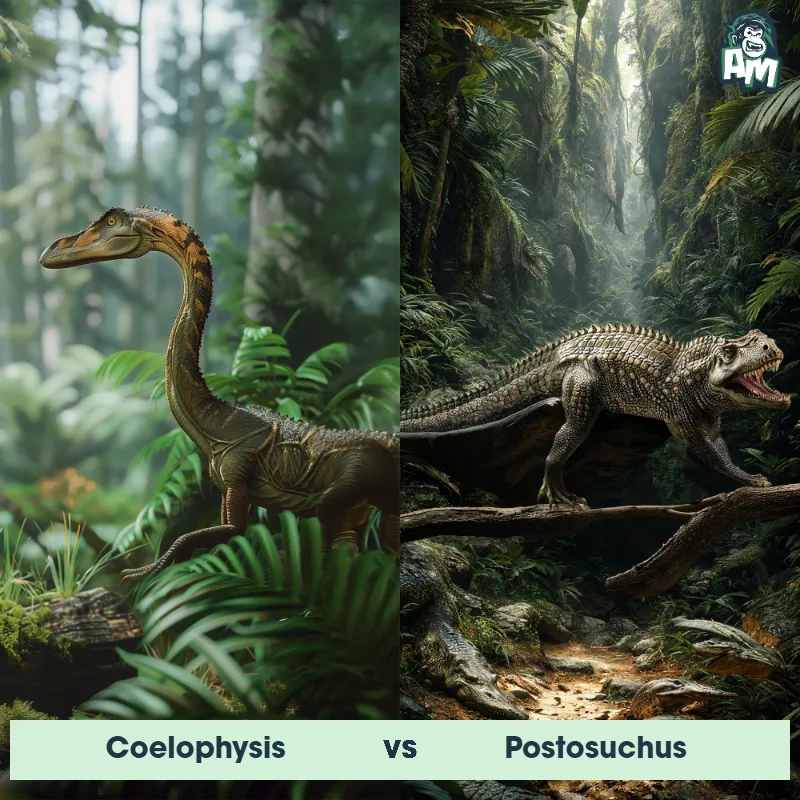The Postosuchus
Postosuchus, a distant relative of modern crocodiles, was a fearsome reptile that roamed the earth during the Late Triassic period. It had a bulky body, powerful jaws filled with sharp teeth, and walked on four legs. Postosuchus had a long tail and sharp claws, making it a formidable predator in its ecosystem.

| Postosuchus | |
|---|---|
| Size | 13 feet (4 meters) |
| Weight | 1,000 pounds (454 kilograms) |
| Speed | 20mph (32km/h) - 25mph (40km/h) |
| Key Strength | Speed and agility |
| Biggest Weakness | Lack of endurance |
| Scientific Name | Postosuchus |
| Family | Rauisuchidae |
| Habitat | Land |
| Geography | North America and Africa |
| Diet | Carnivore |
| Lifespan | 10 years - 15 years |

The Postosuchus
Postosuchus, a distant relative of modern crocodiles, was a fearsome reptile that roamed the earth during the Late Triassic period. It had a bulky body, powerful jaws filled with sharp teeth, and walked on four legs. Postosuchus had a long tail and sharp claws, making it a formidable predator in its ecosystem.
Fun Fact: Postosuchus was not a dinosaur, but rather a type of ancient reptile known as a "rauisuchian."
| Postosuchus | |
|---|---|
| Size | 13 feet (4 meters) |
| Weight | 1,000 pounds (454 kilograms) |
| Speed | 20mph (32km/h) - 25mph (40km/h) |
| Key Strength | Speed and agility |
| Biggest Weakness | Lack of endurance |
| Scientific Name | Postosuchus |
| Family | Rauisuchidae |
| Habitat | Land |
| Geography | North America and Africa |
| Diet | Carnivore |
| Lifespan | 10 years - 15 years |
Postosuchus Matchups
We use AI to simulate matchups between the Postosuchus and other animals. Our simulation considers size, strength, and natural predatory behaviors to determine the most likely outcome.

Can't find the Matchup you want?
Create Your Own MatchupPostosuchus: Diet, Predators, Aggression, and Defensive Behaviors
What did Postosuchus eat?
Postosuchus were carnivorous predators, meaning they primarily ate other animals. They were apex predators during the Triassic period and likely preyed on smaller reptiles, amphibians, and possibly early dinosaurs. Their sharp teeth and powerful jaw muscles were adapted for tearing flesh and crushing bones.
Did Postosuchus have any predators?
As apex predators themselves, Postosuchus had few natural predators during the Triassic period. However, they may have been at risk from larger predators such as other archosaurs or predators from the same ecological niche. Postosuchus likely faced competition for food resources rather than direct predation from other animals.
Were Postosuchus aggressive?
Postosuchus were highly territorial and solitary predators, which suggests a certain level of aggression. They likely displayed aggressive behaviors towards intruders in their territory or competitors for food. However, their aggression was likely more geared towards hunting and defending their territory rather than random attacks on other creatures.
Did Postosuchus fight?
Postosuchus likely engaged in fights with rival individuals over territory or mating rights. These fights may have involved displays of dominance, vocalizations, and physical confrontations such as pushing or biting. Postosuchus were well-equipped for combat with their powerful jaws and sharp teeth, making them formidable opponents in fights.
How did Postosuchus defend themselves?
Postosuchus primarily relied on their size, strength, and predatory abilities for defense. Their powerful jaws and teeth were effective weapons for attacking and defending against threats. In addition, their territorial nature and solitary lifestyle may have served as a defense mechanism, as they could avoid confrontations by establishing and defending their territory.
What was Postosuchus' biggest weakness in a fight?
Despite being fierce predators, Postosuchus did have vulnerabilities in combat. One potential weakness may have been their relatively slow speed compared to some of their prey or competitors. In a fast-paced confrontation, Postosuchus may have had difficulty keeping up with agile prey or evading attacks from quicker predators. Additionally, their solitary nature could have left them vulnerable to ambushes or coordinated attacks from multiple opponents.
Fun Fact: Postosuchus had a skull that could reach up to three feet in length, allowing it to take down prey with its strong bite force.
Fun Fact: Despite its intimidating appearance, Postosuchus is believed to have been more closely related to crocodiles than dinosaurs.











